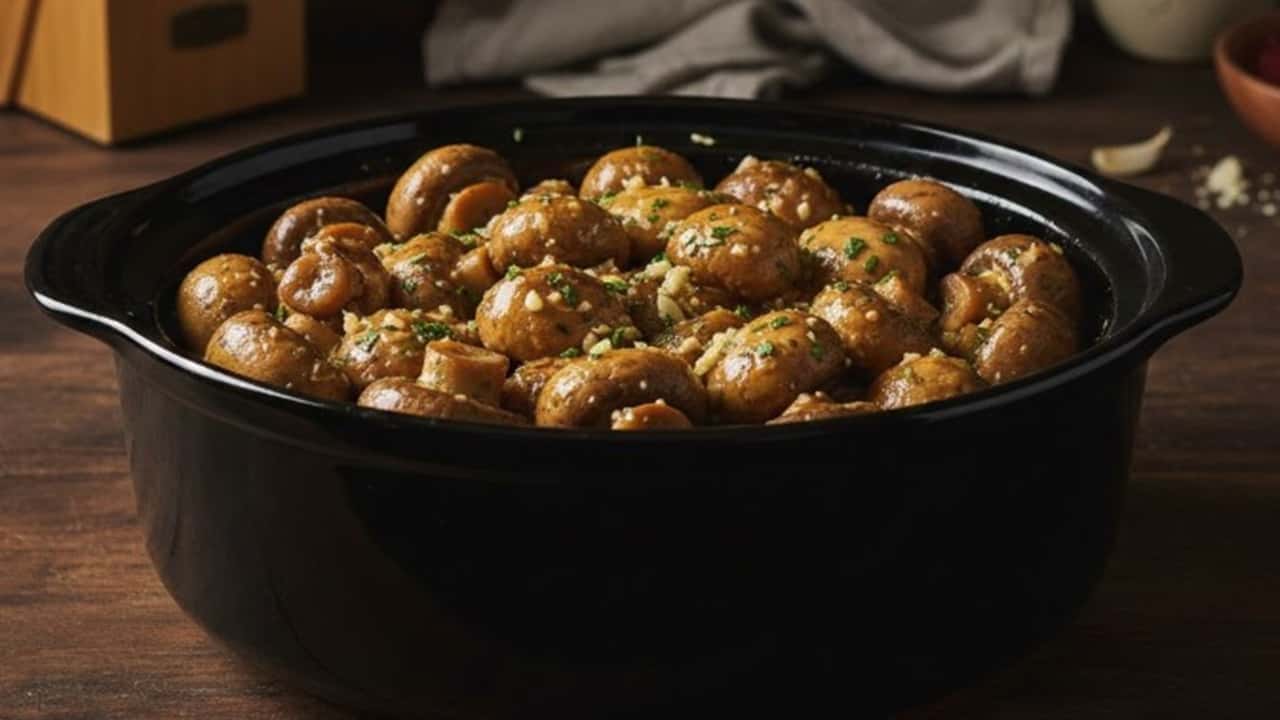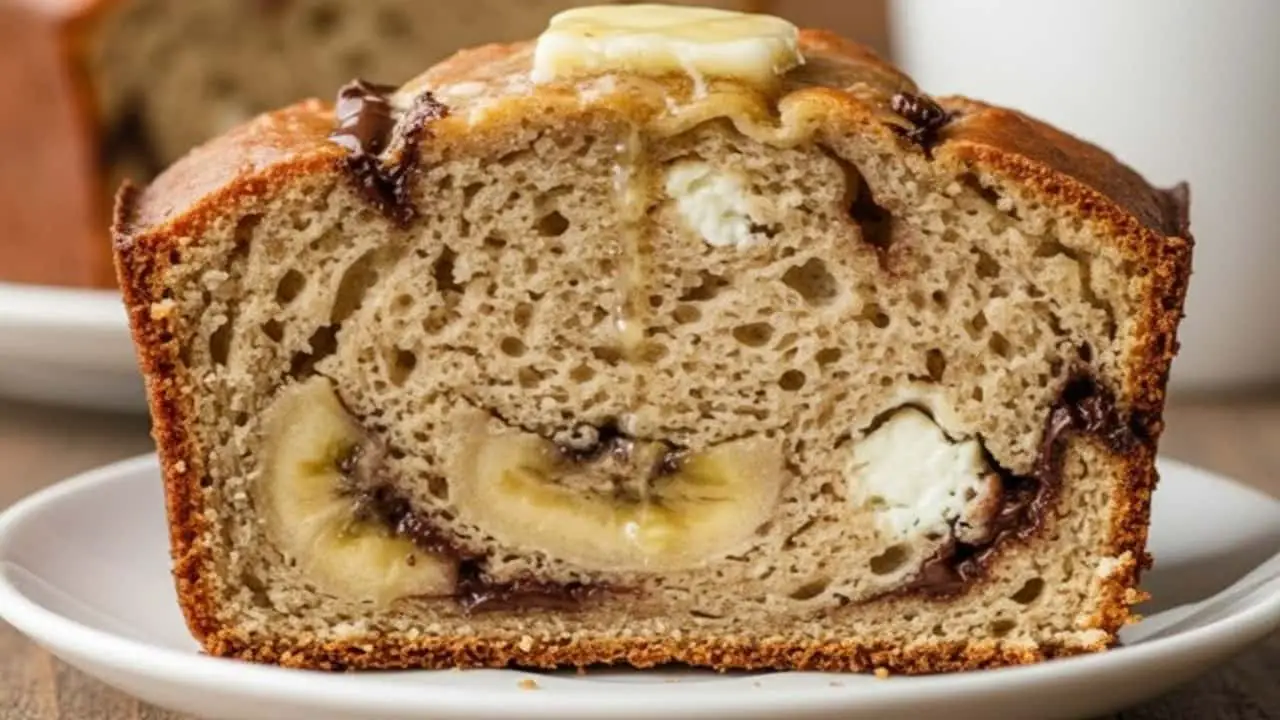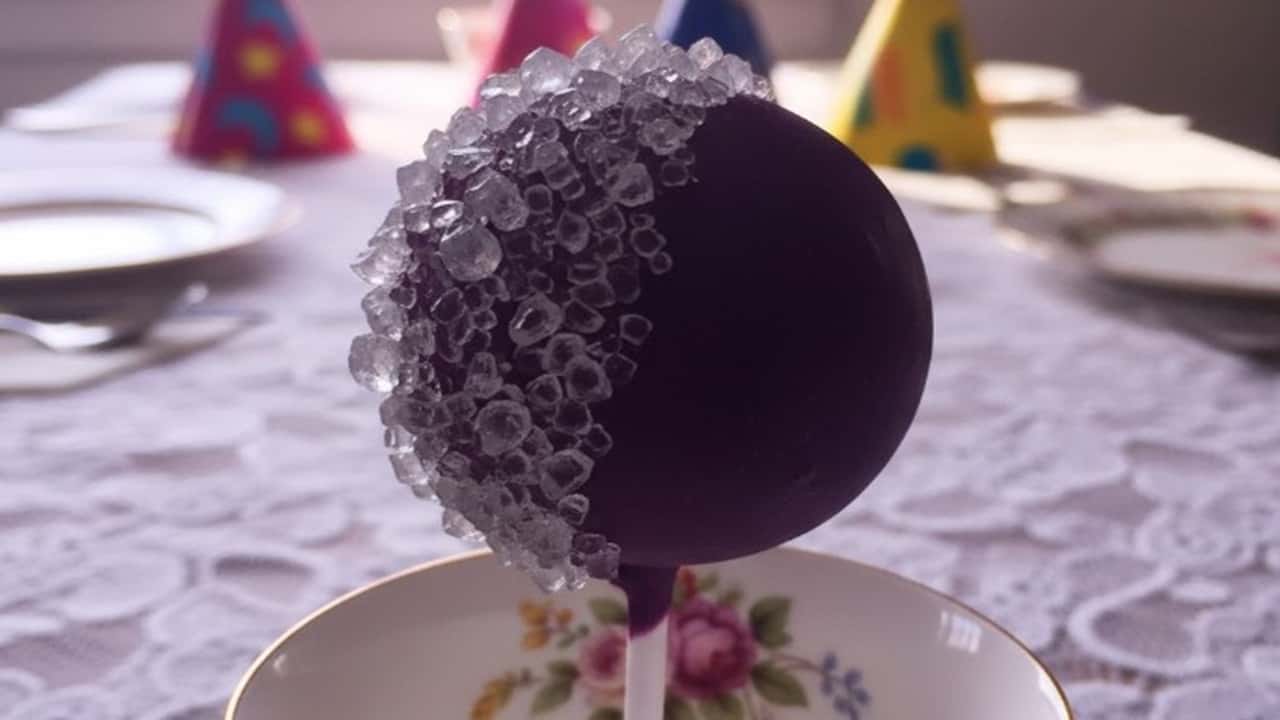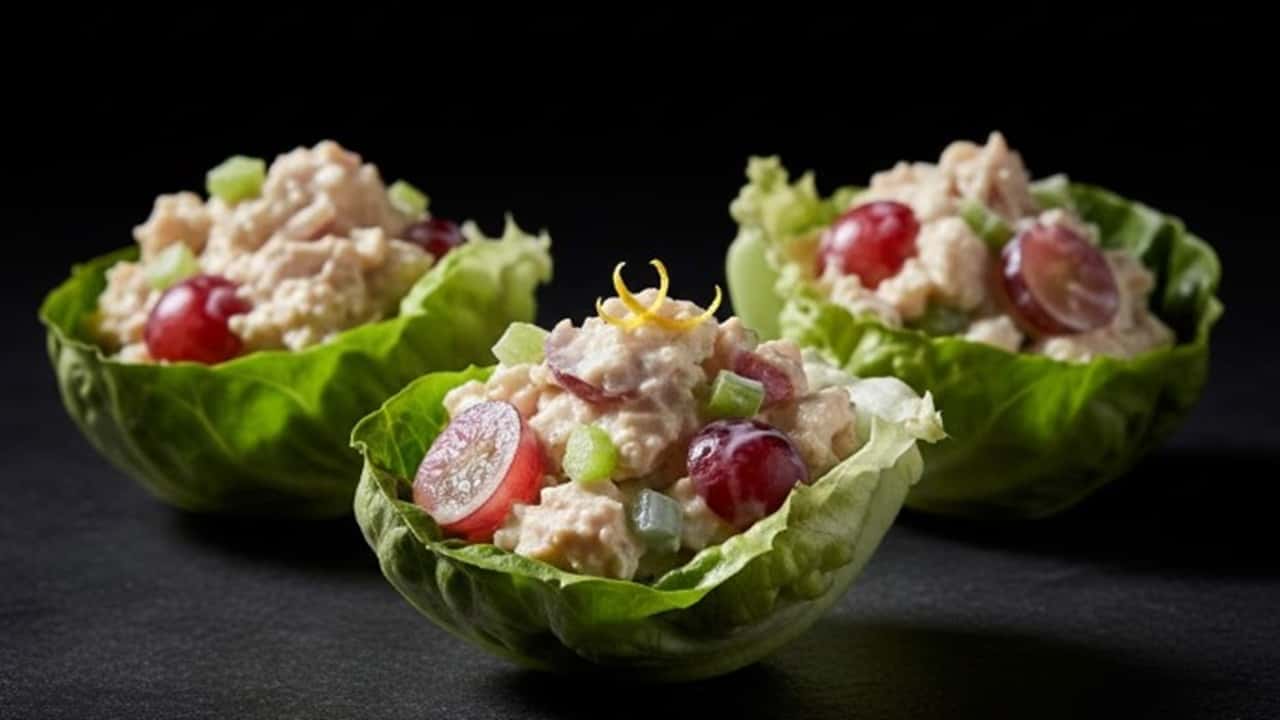Look, I’ve made baked ziti the traditional way for years – you know, the deep casserole dish route. But here’s the thing: I stumbled onto something that changed everything.
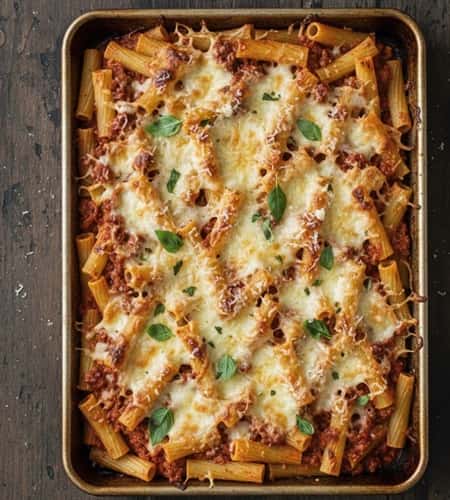
This Baked Ziti Recipe uses a sheet pan, and it’s given me the crispy edges my family actually fights over. No more soggy middle sections that nobody wants.
Why Sheet Pan Ziti Beats the Casserole Dish
Every dad knows the frustration. You pull out your baking dish, layer everything perfectly, and what do you get? A center that’s swimming in excess moisture while the edges are barely golden. I’ve been there too many times.
The sheet pan method solves this. More surface area means every single pasta tube has a shot at getting that caramelized cheese crust.
We’re talking about even heat distribution across the entire dish. Your kids won’t be picking at the mushy center anymore – trust me on this one.
Ingredients Needed To Make Baked Ziti Recipe
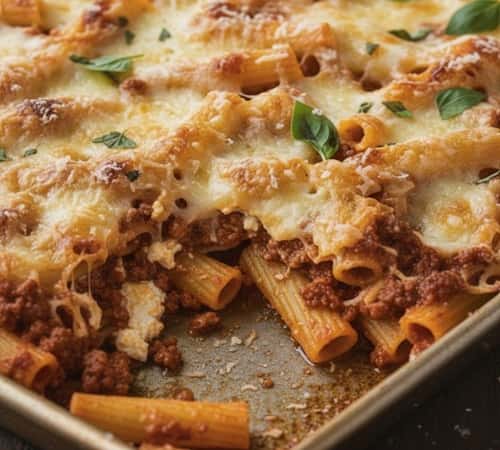
Here’s what you need, and I’m not giving you a grocery list that requires three stores:
For the pasta base:
- 1 pound ziti pasta (or penne, rigatoni – whatever tube pasta you’ve got)
- 2 tablespoons kosher salt for the pasta water
- 2 tablespoons olive oil
For the meat sauce:
- 1 pound Italian sausage (I use half sweet, half hot)
- 1 pound ground beef (80/20 works perfect)
- 1 large yellow onion, diced small
- 6 cloves garlic, minced (don’t skimp here)
- 1 can (28 oz) crushed tomatoes
- 1 can (15 oz) tomato sauce
- 2 tablespoons tomato paste
- 1 tablespoon dried oregano
- 2 teaspoons dried basil
- 1 teaspoon red pepper flakes (optional, but come on)
- Salt and black pepper to taste
- 2 tablespoons fresh basil leaves, torn
For the cheese mixture:
- 15 oz ricotta cheese (full fat – we’re not playing games)
- 1 egg, beaten
- 3 cups shredded mozzarella (divided – this is important)
- 1 cup grated Parmesan (the real stuff, not the shaker)
- ½ cup fresh parsley, chopped
- ¼ teaspoon nutmeg (secret weapon)
Instructions To Make Baked Ziti Recipe
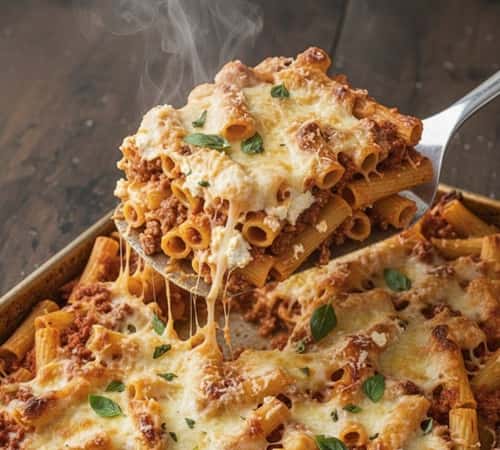
Step 1: Cook Your Pasta (But Not Really)
Fill your biggest pot with water. Add that kosher salt – it should taste like the ocean. Bring it to a rolling boil.
Here’s where everyone screws up: they cook the pasta until it’s done. Don’t do that. You want it seriously al dente – like, two minutes less than the package says.
We’re talking pasta that still has a chalky center when you bite it. Why? Because this baked pasta dish is going in the oven for another 30 minutes, and you don’t want mushy noodles.
Drain it. Toss with that olive oil. Set it aside and forget about it for now.
Step 2: Build a Sauce Worth Fighting Over
Grab your largest skillet or a Dutch oven. Medium-high heat. No oil yet.
Toss in that Italian sausage and ground beef. Break it up with a wooden spoon. You want it browned – really browned – with those crispy bits stuck to the bottom of the pan.
This is where flavor lives. We’re talking about the Maillard reaction here, that chemical magic that makes meat sauce taste like something your nonna would approve of.
Once the meat is browned (about 8-10 minutes), drain most of the fat but leave about 2 tablespoons.
Toss in your diced onion. Let it saute until it’s soft and starting to caramelize – another five minutes.
Then add that minced garlic. Thirty seconds, tops. Garlic burns fast, and burned garlic tastes like regret.
Now dump in your tomato paste. Stir it around for about a minute. This step deepens the tomato flavor – it’s not optional.
Then add your crushed tomatoes, tomato sauce, dried oregano, dried basil, and red pepper flakes. Season with salt and black pepper.
Drop the heat to low. Let this Italian-American masterpiece simmer for at least 20 minutes. Longer is better.
I usually let mine go for 45 minutes while I prep everything else. Stir in those torn basil leaves right at the end.
Step 3: The Cheese Situation
In a medium bowl, combine your ricotta, that beaten egg, 1 cup of the shredded mozzarella, half the Parmesan, the chopped parsley, and that nutmeg.
Yeah, nutmeg. I know it sounds weird in a savory dish, but it does something magical to ricotta cheese. It brightens it up, adds depth. My dad taught me this trick, and his dad taught him. Don’t skip it.
Mix it all together until it’s uniform. Taste it. Add more salt if needed. This cheese mixture should be rich, creamy, and well-seasoned because it’s the backbone of the whole layered pasta situation.
Step 4: Assembly (This Is Where the Sheet Pan Shines)
Preheat your oven to 375°F. Not 350°F like most recipes say – we want it hotter for better browning.
Grab a large rimmed baking sheet – like an 18×13-inch half sheet pan. Either spritz with cooking spray or glide a thin layer of olive oil across the surface.
In a huge bowl (or just use the pot you cooked the pasta in), combine your undercooked ziti, about three-quarters of your meat sauce, and dollops of that cheese mixture.
Don’t stir it too much – you want pockets of that creamy ricotta throughout, not everything completely mixed. This creates texture variation that makes every bite different.
Spread this across your sheet pan. Make it relatively even, but don’t obsess. Pour the remaining sauce over the top. Sprinkle with the remaining 2 cups of mozzarella and the rest of the Parmesan.
Step 5: The Bake
Slide that pan into your oven. Set a timer for 25 minutes.
After 25 minutes, check it. The cheese should be melted and starting to bubble.
Now – and this is crucial – switch your oven to broil and move the rack to the top position. Give it 3-5 minutes under the broiler, watching it like a hawk.
You’re looking for that golden brown cheese with dark spots – those caramelized bits that taste like concentrated cheese heaven.
But here’s the thing about broilers: they go from perfect to burned in about 30 seconds. Stay close.
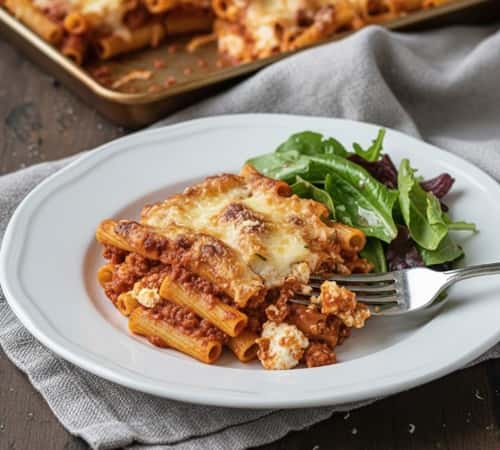
What Makes This Different From Traditional Baked Ziti
Standard baked ziti recipes pile everything in a deep dish. Great for feeding a crowd, sure, but you end up with uneven cooking. The middle stays hot and wet while the edges try to do all the work.
This sheet pan approach flips the script. Every piece of pasta gets exposure to direct heat. You get more of that crispy, cheese-crusted top that everyone wants.
Plus, it cools faster, so you’re not waiting 20 minutes before you can dig in without burning your mouth.
I learned this technique after watching my kids fight over corner pieces one too many times. I thought, why not make the whole thing mostly corners? Revolutionary? No. Practical? Absolutely.
The Timing Strategy for Busy Weeknights
Here’s how I make this work on a Tuesday when I’ve got 90 minutes total:
5:30 PM: Start the pasta water. While it’s heating, brown the meat.
5:45 PM: Pasta’s cooking. Sauce is simmering. I mix the cheese mixture during this window.
6:00 PM: Everything’s combined and in the oven. I use this 30 minutes to help with homework or clean up the kitchen disaster I’ve created.
6:30 PM: Dinner’s on the table, and I look like I’ve got my life together.
The beauty of baked pasta is that you can also make it ahead. Assemble the whole thing in the morning, cover it with foil, and stick it in the fridge. Add 10 minutes to the bake time since it’s starting cold.
Variations I’ve Actually Tried
The Vegetarian Version: Skip the meat. Roast diced eggplant, zucchini, and bell peppers with olive oil and Italian seasoning. Mix those in with extra marinara sauce. My daughter prefers this version, which still surprises me.
The Spicy Route: Double the red pepper flakes. Add some Calabrian chili paste to the sauce. Use all hot Italian sausage. Top with pepper jack cheese instead of mozzarella. This is my version when the kids are at their mom’s.
The Fancy Pants Approach: Use homemade pasta sauce if you’ve got time. Add fresh mozzarella torn into pieces instead of shredded. Finish with fresh basil and a drizzle of good olive oil after it comes out of the oven.
The Protein Boost: Mix in some chopped cooked chicken or shredded rotisserie chicken. This makes it more of a complete one-dish meal and uses up leftovers.
Common Mistakes (Because I’ve Made Them All)
Overcooking the pasta initially: Seriously, it needs to be undercooked. I’ve ruined this dish by cooking the ziti to package directions. It turns to mush in the oven.
Using a cold sauce: If your meat sauce is straight from the fridge, the baking time increases significantly and things cook unevenly. Room temperature or warm sauce works best.
Skipping the broiler step: This is what separates okay baked ziti from the version that makes people ask for the recipe. Those browned cheese bits are non-negotiable.
Not seasoning enough: Pasta absorbs a lot of flavor. Your sauce and cheese mixture should taste slightly over-seasoned on their own because they’re about to mingle with a pound of bland noodles.
Using pre-shredded cheese: I get it, it’s easier. But that anti-caking agent they use prevents it from melting smoothly. Shred your own mozzarella and Parmesan. Takes five extra minutes, makes a huge difference.
Leftovers: The Next Day Miracle
Here’s something nobody tells you: this pasta bake is better the next day. The flavors meld. The pasta fully absorbs the sauce. It’s like it needed that overnight rest to reach its full potential.
Reheat individual portions in a skillet with a tiny bit of water. Cover it with a lid. Medium heat for about five minutes.
This method keeps the bottom crispy while the top stays moist. Microwave works too, but you lose that textural contrast.
I’ve also cut leftover portions into squares and fried them in olive oil like a pasta cake. Crispy on both sides, gooey in the middle. My kids think I’m a genius when I serve this for breakfast. I don’t correct them.
Serving Suggestions That Won’t Insult Your Intelligence
You don’t need much with this. It’s already rich and filling. But here’s what I typically do:
A simple green salad with Italian dressing. Nothing fancy – just romaine, tomatoes, red onion, maybe some olives.
Something crisp and acidic to cut through all that cheese and sauce.
Garlic bread is traditional, but honestly, this dish is already carb-heavy.
If I’m making bread, I brush baguette slices with olive oil, rub them with raw garlic, and toast them. Lighter than buttery garlic bread but still satisfies that bread urge.
Sometimes I’ll sauté some spinach with garlic and olive oil. Dumps it right on top of each serving.
Adds color, makes me feel less guilty about the cheese situation, and actually tastes good.
Scaling Up for a Crowd
This recipe easily doubles. Use two sheet pans instead of one. Everything else stays the same.
I’ve made this for my son’s soccer team party – three pans, 20 hungry teenagers, and somehow there were no leftovers.
If you’re bringing this to a potluck or family gathering, assemble it at home but bake it at your destination if possible. The broiling step really needs to happen right before serving for maximum impact.
Cover it with aluminum foil if you’re transporting it hot. Bring extra Parmesan for sprinkling. Everyone appreciates that.
The Equipment That Matters
You don’t need much, but here’s what makes this easier:
A good half sheet pan: I use the Nordic Ware ones. Heavy-duty, won’t warp. This isn’t the time for your flimsy dollar store pan.
A large pot for pasta: At least 6 quarts. You need room for the pasta to move around.
A big skillet or Dutch oven: Making sauce in a small pan is miserable. Go big.
A box grater: For shredding your own cheese. The food processor works too, but I’m already cleaning enough dishes.
Final Thoughts
The first time I made baked ziti on a sheet pan instead of the usual casserole, my middle kid looked at me like I’d discovered fire. “Dad, every piece is a corner piece,” he said, eyes wide.
That’s when I knew I’d stumbled onto something. This method isn’t about reinventing Italian comfort food – it’s about fixing the distribution problem that’s plagued baked pasta dishes forever.
You’re not going to find this approach in most traditional recipes, but you will find your family scraping the pan clean and asking when you’re making it again.
That crispy cheese edge on every serving? That’s not luck – that’s physics and a little bit of trial and error from a guy who just wanted dinner to work better.
Make this once, and you’ll understand why I haven’t gone back to the deep dish method.
